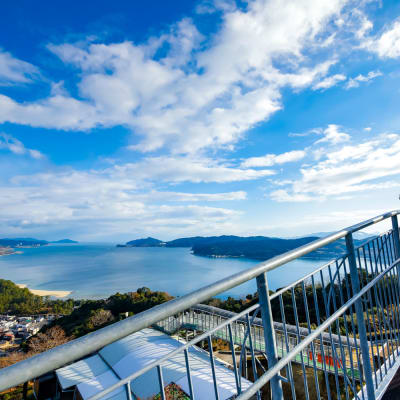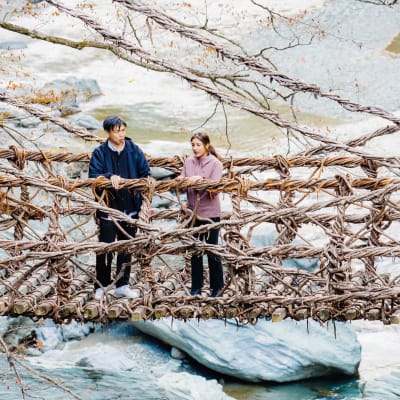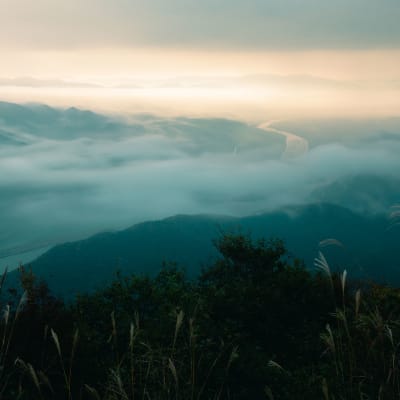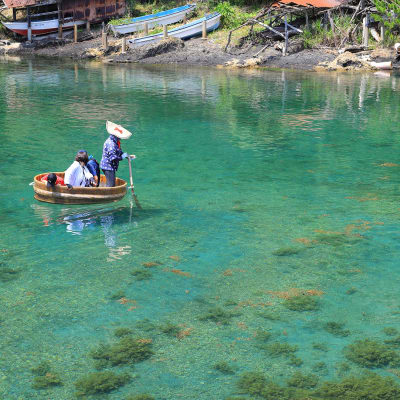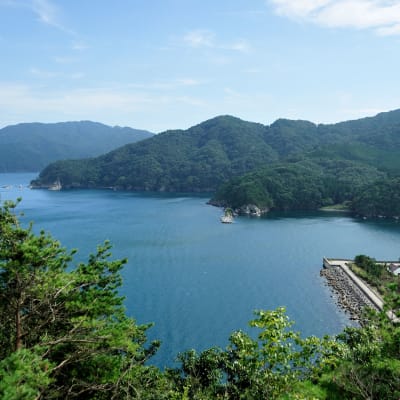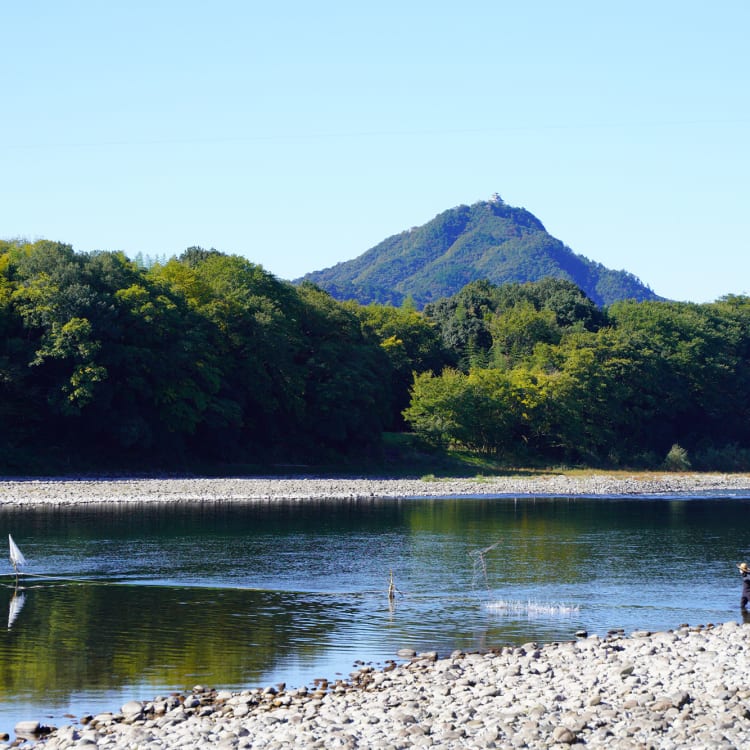
Sustainable Destinations Sustainable Eats: Culinary Culture Shaped by Bountiful Landscapes
Numerous regions across Japan are actively championing sustainability by embracing their culinary traditions and cultural heritage, all while fostering a harmonious coexistence with nature. Gifu Prefecture, renowned for the Nagara River and its bountiful ayu fish blessings; Shirakawa-go, a rural enclave in a snow-laden landscape that has cultivated a distinctive local culture; and Shodoshima, recognized as Japan’s inaugural olive island, achieving success on both industrial and tourism fronts. Today, we highlight the pioneering efforts of these regions, which provide insightful ideas that significantly contribute to the global pursuit of societal sustainability.
Nagara River basin (Gifu)


The Nagara River, which flows from Mt. Dainichi in Gifu Prefecture through Mie Prefecture to Ise Bay, is a world-class river that stretches 166 kilometers and is considered one of the three most pristine rivers in Japan. Even with 860,000 people residing in its watershed, the Nagara River sustains ample water volume and superior water quality, continuing to enrich the lives of those along its basin.
For some 1,300 years, the traditional fishing practices and aquatic environment of the pristine Nagara River have been preserved across generations, profoundly influencing the lifestyle, diet and traditional culture of the people. These efforts to protect the river’s purity and integrate it into industry and tourism have been internationally recognized. As a result, the Nagara River Basin was selected as one of the Top 100 Sustainable Destinations in 2021 by Green Destinations, a global certification organization for sustainable tourism.
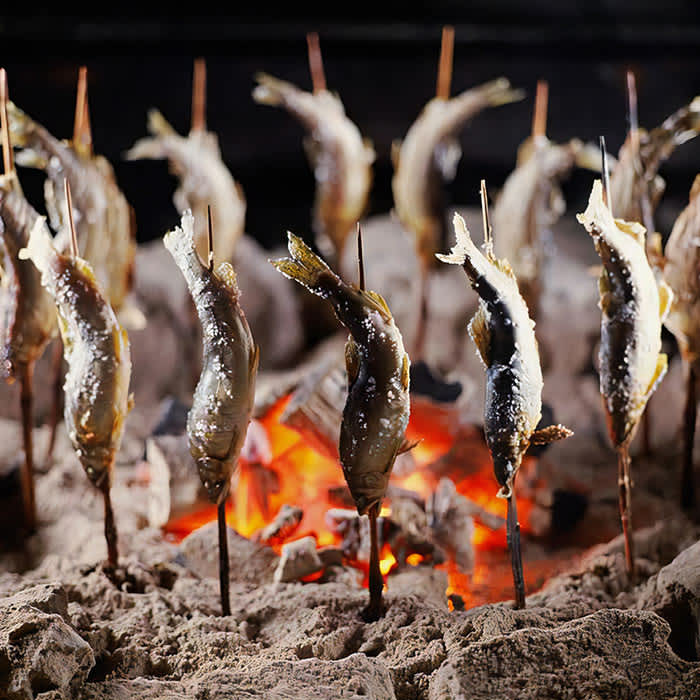
A symbol of the high level of coexistence with nature developed by the inhabitants of the Nagara River basin is the Ayu sweetfish that lives in the river.

In this region, a system has been established around sweetfish, intertwining traditional fishing methods such as yoamiryo (night net fishing), food culture, environmental conservation and economy, which connect to enriching the community. In 2015, this cyclical satokawa system of the aquatic environment, fishing resources, and the daily lives of people, received international recognition. The Ayu of Nagara River System (the connection between people and sweetfish within the Satoyama landscape) was designated as a Globally Important Agricultural Heritage System.
In particular, the traditional fishing method, with its rich 1300-year history, serves as an unparalleled cultural symbol and tourist attraction. The craftsmanship showcased on wooden boats, illuminated by bonfires along the dark Nagara River, embodies a tradition that seamlessly transcends time into the modern era, creating a truly fantastical scene.

The people of the Nagara River basin have creatively incorporated the river’s waters into their lives. Gujo Hachiman City, commonly known as the “Water City,” is situated along the middle stretches of the Nagara River, and the pristine Yoshida River, a tributary of the Nagara, gracefully winds through the heart of the city. This geographical advantage has allowed the construction of a network of water canals for both daily use and fire protection since the 17th century.

As you walk through this town of Gujo Hachiman, you’re likely to encounter water-related facilities and tools that are an integral part of daily life, such as mizubune water tanks used for drinking and washing, communal laundry facilities, temporary water dams called sekiita, and fire buckets.

In the Kawahara-cho district, located in the center of Gifu City, a distinctive landscape of traditional townhouses with shiraki lattices unfolds. It is a local custom to wash the wooden parts of the houses facing the street with water several times a year to maintain the aesthetic beauty of this charming townscape.
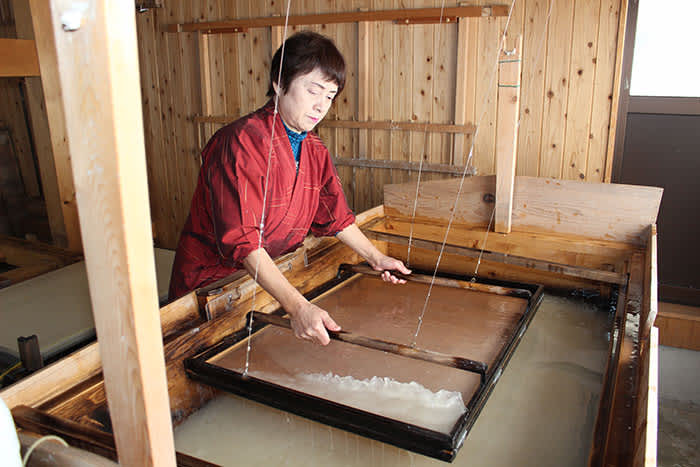
We must not forget the many traditional crafts that have developed with the blessing of the Nagara River. Mino Washi, a handmade Japanese paper used for materials such as shoji screens and Japanese umbrellas, has a history dating back 1,300 years when it was used for Japanese family registers. The paper has continued to gain international attention as it’s been used to restore Oriental paintings in renowned art museums around the world and even in the official award certificates for the Tokyo 2020 Olympic and Paralympic Games.

Seki City in Gifu Prefecture is known as one of the three great cutlery producing areas of the world. Its history dates back some 800 years to the making of Japanese swords. Today, there are facilities where you can observe and experience the swordsmithing techniques that have been passed down through the ages.

Gujo Honzome, the traditional craft of indigo dyeing in Gujo Hachiman, flourishes thanks to the area’s clear streams. The cold, pure waters play a crucial role in crafting products with their renowned hue. With each use, the deep indigo blue of Gujo Honzome evolves into a vibrant shade, often referred to as “Japan Blue,” garnering international praise. Today, the Watanabe Indigo Dyehouse, with a proud history spanning 430 years, stands as the sole heir to the esteemed Gujo Honzome tradition.
The water environment of the Nagara River basin, preserved through generations, has greatly influenced the local lifestyle, food culture, and even arts and crafts. Visiting Gifu and experiencing this background can provide insights into building a sustainable future.
Links
Shirakawa-go (Gifu)


In the secluded region of Shirakawa-go, surrounded by the snow-laden mountains, ancient farming practices have thrived for generations. The iconic Gassho-zukuri houses, characterized by their steep thatched roofs designed in harmony with the natural surroundings, stand in picturesque villages, meticulously preserved through the years.
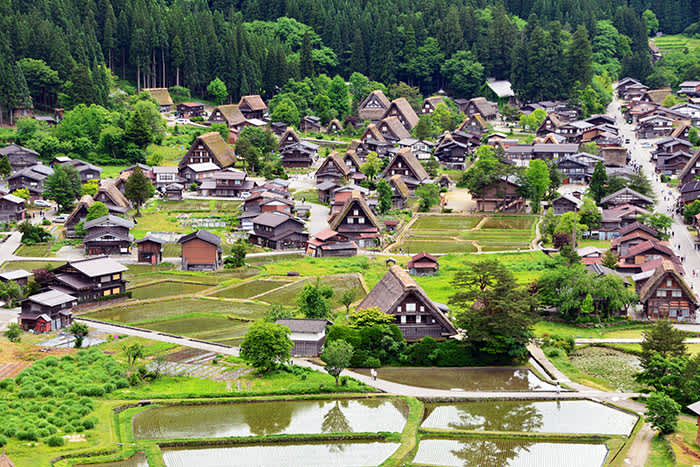
In recent years, the unique Gassho-style villages of Shirakawa-go and Gokayama have gained increasing recognition for their rare architectural beauty. Their significance was officially acknowledged in 1995 when they were inscribed on the UNESCO World Heritage List, alongside the Gokayama area in Toyama Prefecture. Beyond that, these villages have earned international acclaim as sustainable tourism destinations. In 2020, the Green Destinations international certification organization selected them among the top 100 sustainable tourist destinations worldwide. Moreover, their excellence was further highlighted in 2023 when they received certification as Best Tourism Villages by the United Nations World Tourism Organization (UNWTO), drawing global attention.

The sustainable lifestyle here, as seen in the rethatching of thatched roofs, embodies a harmonious coexistence with nature, providing much to learn from the local commitment to sustainability. Furthermore, the area has been a pioneer in promoting sustainable tourism in recent years, showcasing a heightened environmental consciousness ahead of the national curve.

Furthermore, Shirakawa-go has preserved a traditional custom of mutual aid known as yui, which uses the Japanese characters that mean “to bond.” In various aspects of life, including activities like fire prevention and re-thatching of roofs, one can sense the strong bonds and close-knit community spirit.

Yui-themed tourism packages are available where visitors can stay in villagers’ homes, enjoy traditional local cuisine around an irori (hearth), and participate in Shirakawa-go’s conservation activities.
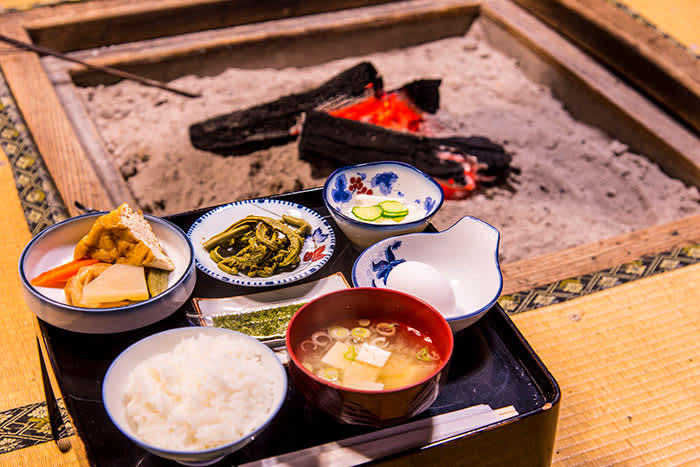
By immersing themselves in the local lifestyle of Shirakawa-go, visitors can gain a deeper understanding and respect for this unique culture.

Traveling about 15 kilometers south from this village, you can visit another charming area, Hirase Onsen. Hirase Onsen is located at the base of Mt. Hakusan, a mountain revered as a sacred peak, and has been cherished by people for ages. The area offers a variety of activities and spots to enjoy the great outdoors, including hiking, camping in primeval forests, and open-air baths with magnificent views of grand waterfalls and lakes.
In Shirakawa-go, the community collaborates across generations to actively preserve and promote the region’s sustainable allure. A visit promises fresh and unique experiences, offering a distinct departure from the routines of everyday urban life.
Links
Shirakawa-go Tourist Association
Shodoshima (Kagawa)
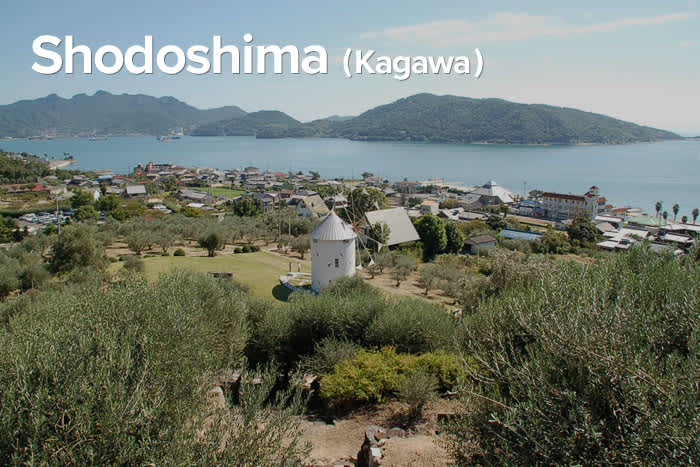

Nestled in the Seto Inland Sea, Shodoshima captivates with its natural beauty, culinary delights, and rich history. Among its myriad offerings, the olive stands out as a noteworthy feature. Leading Japan’s olive cultivation since the early 20th century, Shodoshima now holds the nation’s top spot in terms of plantation area and yield. Acknowledged as a significant tourist destination, the island has lovingly earned the nickname “Olive Island.”

In Shodoshima, efforts are being made toward sustainable community development, focusing on preserving the landscape and inheriting traditional culture. This includes establishing a cyclical agriculture system that fully utilizes olives, promoting a regional revitalization program centered on the olive industry.

The island also offers tourism activities with a focus on sustainable tourism. Visitors can participate in beach cleaning activities at Shioe Beach, next to the Twenty-Four Eyes Movie Village, a location known for a nationally popular movie. These efforts reflect the high awareness of local residents and offer much to learn from.
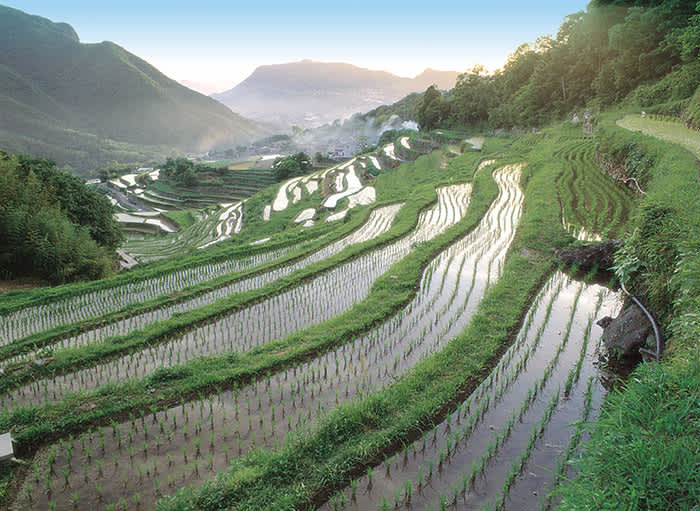
Nakayama Senmaida is a picturesque, terraced rice field that evokes the essence of Japan’s rural landscape. In Shodoshima’s agricultural areas, additional initiatives are in place to safeguard traditional cultural elements, including Kabuki.
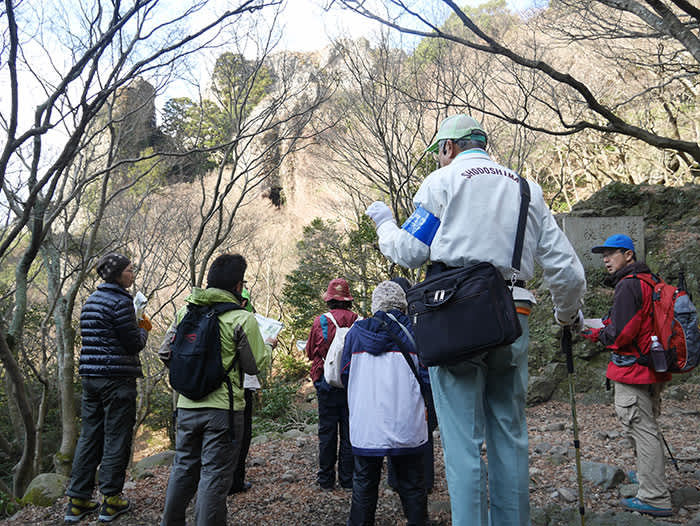
In addition, at one of Shodoshima’s most scenic spots, Kankakei Gorge, guided tours provide insights into the island’s history, which has been preserved through the efforts of ancestors over the centuries.

As such, Shodoshima focuses on sustainability initiatives centered around the olive industry and its deeply rooted local culture. A visit to Shodoshima can educate visitors about ideas for creating a sustainable future and the importance of community involvement. It extends an invitation to immerse oneself in the area’s rich history and impassioned spirit, providing a firsthand experience of Shodoshima’s unique charm and commitment to a sustainable legacy.
Links





















































